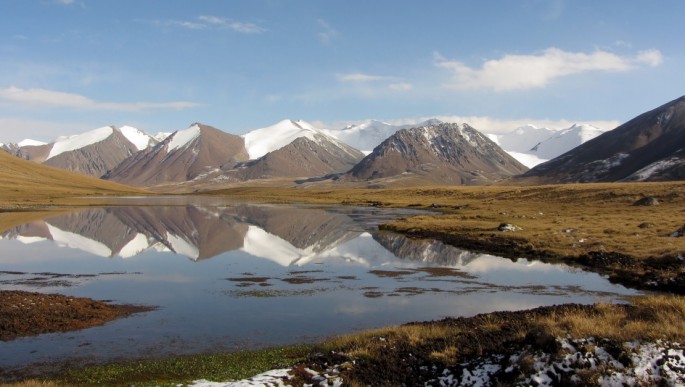New research reveals that the glaciers found in the Tian Shan mountains in Asia are slowly disappearing with more than a quarter lost in total mass in the last 50 years. This rate is so dramatic that its estimated to be four times greater than the global average decades ago.
These new findings also predict that by the year 2050, half of the ice left in the Tian Shan glaciers will also disappear where the effects of these diminishing glaciers can lead to reduced water supply across the region especially in central Asia that can also be the source of new conflicts.
Across Central Asia, this mountain ranges stretches for 1,550 miles where melting snow and glaciers from the mountains trickle down to the lowlands and provide water supply to nations such as Kazakhstan, Kyrgyzstan and Uzbekistan that also compose of the largest irrigation zones on the planet.
Apart from these countries, this ice melt also supplies water to China particularly the northwestern Xinjiang Uyghur region where natural gas reserves such as coal and oil are crucial to the country's economic welfare.
According to lead author of the study, Daniel Farinotti, who is a glaciologist from the German Research Center for Geosciences including the Swiss Federal Institute for Forest, Snow and Landscape Research, water resources will continue to decline in that region in the future where there is a huge potential for internal conflicts.
However, scientists say that crucial data about the state of glaciers in the Tian Shan mountains is limited which is why estimations of how these glaciers can change in the future is rather insufficient. Populations will need this type of information since their water supply will depend on this scientific data.
Using data from NASA's GRACE satellite (Gravity Recovery And Climate Experiment) and NASA's ICEsat (Cloud and Land Elevation Satellite), the team developed computer models and simulations of the Tian Shan glaciers with field observations of snowpits and readings obtained from the glaciers' surfaces.
From these reconstruction of glaciers, scientists have discovered that the Tian Shan changed its mass from 1961 to 2012 where the glaciers apparently lose 5.4 billion tons of ice every year on average.
Researchers believe that this decline is linked to warmer summer temperatures in the region that is possibly caused by climate change. What's more is that these climate models are suggesting that these summer temperatures will continue to rise in the next decades where the Tian Shan glaciers will shrink even more.
Farinotti says that the only way that these glaciers will stop disappearing is to prevent increasing global temperatures. Also, with the decline of water supply in the region, he adds that better irrigation systems are needed to be applied to be more efficient in growing crops with less water, since current irrigation practices date back to the Soviet era.
This study is published in the journal Nature Geoscience.



























